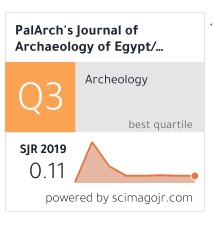DEVELOPING A CONCEPTUAL MODEL OF CITY IDENTITY: MEANINGS, DETERMINANTS, AND CONSEQUENCES
Abstract
As research interests on city branding continue to increase, the role of residents as internal stakeholders in the development of city identity has gained limited attention from previous researchers of place/city branding. Given the fierce competition among cities and nations in gaining the desirable edge as tourist destinations in recent times, researchers are charged to consider the central role of residents in developing city branding strategies. Additionally, the role of internal stakeholders, most especially city residents in the development of a viable city/place brand identity models have been understudied in the literature. In other words, there is a lack of understanding of the contributions and implications of internal publics on the development of a thriving city brand. Therefore, many scholars and practitioners of place branding management call for a model of brand identity to develop a place branding strategy that highlights the importance of internal publics. Following a critical and comprehensive review of multidisciplinary literature using a conceptual approach, a model is finally developed. As such, this paper put forth a conceptual model on the determinants of city identity development from the perspective of city residents. Also, the model highlights the consequences of city residents’ involvement in the development of city identity.



